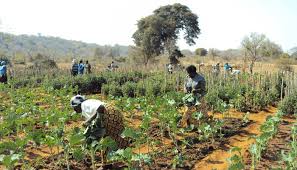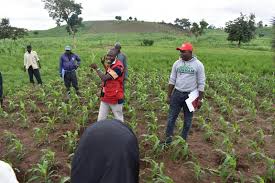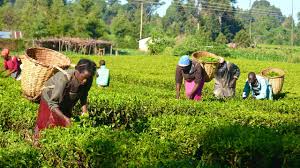Nigeria is among the 153 countries that signed the Convention on Biological Diversity (CBD) at the United Nations Earth Summit in June 1992. The Convention is a comprehensive international agreement on biodiversity. Its five main aims are:
i. Conserving biodiversity at all levels: genetic, population, species, habitat, and ecosystem;
ii. Sustainable development of biodiversity: to ensure that this diversity continues to maintain the life support systems of the biosphere;
iii. Fair and equitable sharing of benefits from biodiversity: to recognize that social and economic goals for the use of biological resources and benefits derived from genetic resources are central to the process of sustainable development and that this, in turn, will support conservation;
iv. Sharing of relevant technology for sustainable development; and
v. Establishment of a global financial mechanism for the conservation of biodiversity.
The Convention calls for partnerships between nations and among government organizations, NGOs, and the private sector. It emphasizes articulate planning strategies and programs, with considerations for legislation, regulation, law enforcement, use of appropriate administrative mechanisms, research (data generation), and budgeting.
Geographical Location and Size of Nigeria
Situated in West Africa, Nigeria covers an area of 923,768 km². It lies between latitudes 4° and 14°N and longitudes 3° and 15°E.
It shares its 4,047-km international border in the east with Cameroon Republic, in the north with Niger Republic and Chad, and part of the western boundary with Benin Republic. In the south, the country is bounded by the Atlantic Ocean’s Gulf of Guinea.
Read Also: Description of Some Popular Goat Breeds
Political and Administrative Structure of Nigeria

Nigeria operates a federal system of government. There is a central government with its headquarters in Abuja. There are 36 states and the Federal Capital Territory (FCT) with 774 Local Government Areas that constitute the third tier of government.
For reasons of coordination and representation in national affairs, the 36 states are commonly grouped into six geopolitical zones.
The current constitution was adopted in 1999, and the present government represents the first democratically elected government in about twenty years.
The executive arm is headed by a President, Commander-in-Chief of the Armed Forces, elected by popular vote for no more than two four-year terms. The Federal Executive Council, an appointed body, functions as a cabinet within the executive arm.
The legislature is bicameral, consisting of the Senate elected by popular vote to serve four-year terms, and a House of Representatives, also elected by popular vote to serve four-year terms.
The judiciary constitutes the third arm of government and is made up of the Supreme Court and the Federal Courts of Appeal, with judges appointed by the federal government on the advice of an Advisory Judicial Committee.
A Governor, who appoints Commissioners to oversee various state ministries, heads each state. It is noteworthy that state ministry structures vary between states and do not necessarily follow the federal model.
Local government administrations (LGAs) function as the main supporting bodies for activities within each state and are administered by elected Chairpersons.
Population and Settlement Patterns in Nigeria
The country is the most populous nation in Africa. Based on the 1991 census figure of 88.9 million, and an assumed growth rate of 2.8 percent per annum, Nigeria’s current population has been estimated at 120 million.
About 30% of the population lives in urban areas, such as Lagos, Ibadan, Warri, Enugu, Onitsha, Owerri, Benin City, Port Harcourt, Kano, Kaduna, and Jos.
The population exhibits a strong rural-to-urban migration, which has increased since the creation of more states.
Nigeria’s population exhibits high ethnic and cultural diversity, composed of more than 250 ethnic groups, with Hausa, Fulani, Yoruba, Igbo, Ijaw, Kanuri, Ibibio, Edo, and Tiv as the major ethnic groups.
The population density in the country was put at 96 persons per km² in 1991, although regional differences occur, with the southeastern region having the highest density of 247 persons per km², while the lowest density occurs in the west-central with 43 persons per km².
In the northwest, the density was estimated at 76 persons per km², while that of the southwest was estimated at 194 persons per km². The 1991 census revealed that 64 percent of the population lives in rural areas, but the urban population has been growing rapidly at an annual rate of 4.5 percent.
Today, about 70 percent of the Nigerian population consists of rural dwellers, an indication of the importance of agriculture in the economy.
Furthermore, as much as 1,000 persons per km² density has been attained in many LGAs of Abia, Imo, and Akwa Ibom states in the southeastern part of the country; Lagos and Ibadan in the southwest, and Kano in the north.
The escalating growth in population implies an increasing demand for biological resources. This, in turn, translates into increasing demand for arable land, resulting in deforestation, shortened fallow periods, soil deterioration, and increasing application of inorganic fertilizers, pesticides, and herbicides for agriculture.
Thus, the increasing population growth has become very crucial among the set of factors that degrade the environment and threaten biodiversity.
Read Also: History and Distribution of Goats
Climatic Conditions Influencing Agriculture in Nigeria

In Nigeria, as in other parts of the tropics, moisture plays a critical role in determining the abundance of natural life. Two distinct seasons occur in Nigeria: the wet and dry seasons, with the highest rainfall occurring in the coastal regions of the southeast, where the mean annual rainfall is more than 2,000 mm, distributed throughout the year.
As one moves from the coast towards the interior, the total amount of rainfall and length of the wet season decreases. The monthly temperature for most locations in the south ranges between 22°C and 32°C and 8°C to over 40°C in the north.
The highland areas of Obudu, Mambilla, and Jos Plateaus have cooler climates than the rest of the country. During the dry season, usually from October to April, the relative humidity at 6:00 a.m. averages about 30 percent, while relative humidity at noon is less than 10 percent.
Major River Systems and Drainage Patterns in Nigeria
Nigeria is drained by two major river systems that play a significant role in the climate and vegetation of the country. The Komadougou-Yobe in the North, with headwaters formed by the Hadejia, Jama’are, and Misau Rivers, flows northeast from the north-central portion of the country, eventually forming the border with the Niger Republic before emptying into Lake Chad in the extreme northeast corner.
The Hadejia-Nguru Wetland, an important freshwater habitat for wildlife, is part of this system. The Niger-Benue system consists of the Niger flowing into the country across its western border with Benin and Niger Republics and southeasterly to the central part of the country.
There, it is joined by its major tributary, the River Benue, which flows southwesterly from its headwaters in the mountainous border with Cameroon. From the confluence at Lokoja, it flows southwards, emptying into the Atlantic through the Niger Delta.
The River Niger is the third-largest in Africa and the sixth-largest in the world. Other important river systems include Ogun-Oshun, Benin-Owena, Anambra–Imo, and Cross-River.
Soil Types and Their Agricultural Significance in Nigeria
The soil pattern in the country is determined mainly by its geology and climate. Four main soil groups occur in a zonal pattern from the coast to the northern boundary.
1. Hydromorphic and Organic Soils
These are derived from alluvial, marine, and fluvio-marine deposits of variable texture. They occur extensively in the Niger Delta and in the coastal zone west and east of the Delta. They also occur intrazonally along the major rivers throughout the country.
2. Ferallitic Soils
These are found in the rainforest, mainly on sedimentary rocks. The soils are very old, deeply weathered, and red to yellow in color. They are predominantly clayey in texture and exhibit largely undifferentiated horizons.
3. Ferruginous Tropical Soils
These are found at the drier margins of the forest zone but more extensively in areas of savannah vegetation. They occur mainly as derivatives of crystalline rocks, although they are also found on other rocks rich in ferromagnesium minerals, sandy deposits, and old holomorphic soils.
The soils are invariably red or reddish in color, rich in iron, often low in organic matter compared to the ferallitic soils, except that they are more often less permeable, more susceptible to erosion, and more fertile.
4. Arid and Semi-Arid Soils
These soil types are typical of the northernmost regions with low rainfall. In Nigeria, they are recognized as regosols or brown soils. They have been developed on drift and continental sedimentary deposits and are mainly found in the Lake Chad Basin area.
Ecological Zones and Ecosystem Diversity in Nigeria
Nigeria has a variety of ecosystems ranging from forests in the south through moist savannas in the central part of the country to dry arid savannas in the extreme north.
Freshwater, brackish, and marine ecosystems also occur, and elements of montane vegetation occur at high altitudes in the eastern borderlands.
The coastal fringe of the country is characterized by a mix of mangrove Rhizophora swamps and freshwater swamp forests on barrier islands, as well as stretches of sandy beaches.
The Nigerian mangrove ecosystem is the largest in Africa. The water in this ecosystem is typically brackish, especially at estuaries.
The mangrove forests are increasingly coming under the threat of Nipa (Nypa fruticans), an alien invasive species, which establishes at disturbed sites and spreads into the mangrove vegetation. The spread of Nipa palm is affecting the fishery of the area.
Following the swamp forests is a belt of lowland rainforest. About 20% of the country was formerly covered in these Guineo-Congolian lowland rainforests, but over 90% of these forests have, mainly as a result of anthropogenic activities, become degraded or lost.
Nigeria’s lowland rainforests are characterized by a great variety of plant species arranged in a complex vertical structure of forest canopies. Some economically important rainforest trees include Mahogany (Khaya species), Iroko (Milicia excelsa), African walnut (Lovoa trichilioides), and Mansonia (Mansonia altissima).
A number of tree species in this ecosystem are increasingly becoming threatened by illegal and legal logging activities.
It is also the area sometimes referred to as the Palm belt because of the ubiquity of the oil palm (Elaeis guineensis), a principal economic tree crop of that ecosystem. Many Non-Timber Forest Products are extracted from these forests. They have important values as spices,
Do you have any questions, suggestions, or contributions? If so, please feel free to use the comment box below to share your thoughts. We also encourage you to kindly share this information with others who might benefit from it. Since we can’t reach everyone at once, we truly appreciate your help in spreading the word. Thank you so much for your support and for sharing!

